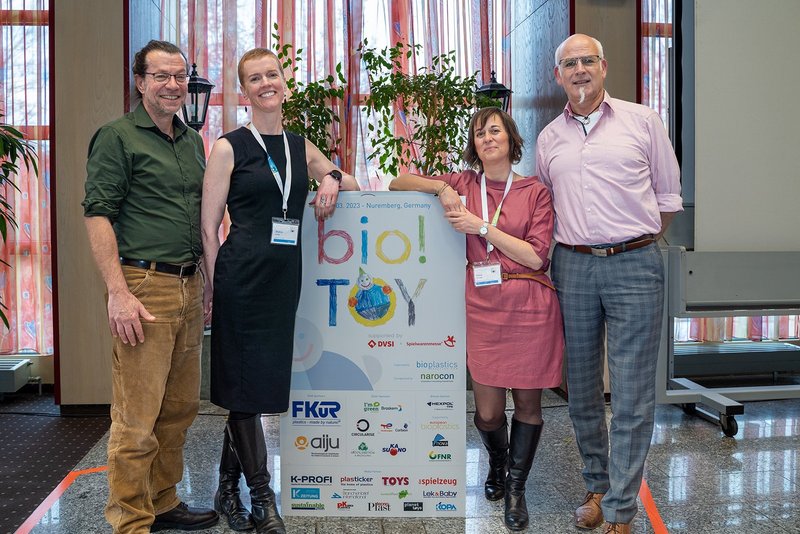
Acting sustainably: Shopping goes green
By Claudia Rivinius
Acting sustainably – what sounds so easy is in practice everything but trivial. On the one hand, acting sustainably requires people to be active and ready to change their behaviour. On the other hand, it is necessary for us to develop a collective understanding of the term sustainability.
However, this is where one of the greatest challenges lies. For, in order to decide whether a wooden toy made of wood from sustainable forestry and organic paint from China is more sustainable than a toy manufactured and varnished in Europe made of wood from conventional forestry requires an in-depth analysis. The product carbon footprint (PCF) is a possible measure to use for such calculations, but it is only available for a small amount of products today. Additionally, it only assesses one relevant factor: the total amount of CO2 emissions a product causes along its entire value chain.

However, the PCF is not an adequate measure to determine a product’s water consumption, its contamination of the environment, associated microplastic, impact on biodiversity, or use of child labour. It is therefore not surprising that there are over 450 different seals in Europe that aim towards providing consumers with orientation. But, just as in traffic, where more signs do not lead to more safety, the amount of different seals leads to consumers being more confused.
“We need a cross-industry and comprehensive sustainability score for all products. Thereby, we could reduce the complexity of purchase decisions for consumers. Seals have to become more easy to understand and trust in existing seals must be strengthened”, as the DHBW Bonn states it in a whitepaper on the attitude-behaviour gap in 2022.
This study also looked into the relevance of sustainability when it comes to choosing a shopping location. The following graphic shows the results: 41.6 % of respondents declared wanting to change their shopping location in order to have a more sustainable offering.
2021 | I agree/mostly agree, that… | 2022 |
|---|---|---|
43,2% | ... sustainability has an influence on my eating and purchasing behaviour | 42,9% |
52,5% | ... I am ready to do without affluence for more sustainable consumption | 50,8% |
40,0% | ... I am ready to change my place of purchase for a more sustainable product range | 41,6% |
“To increase sustainable consumption, retailers must first take certified, sustainable and long-lived products into their product range and in turn discontinue products that are especially bad for the environment. In addition, the more sustainable products should be placed more prominently, label colour can also be used to emphasis this”, according to a recommendation by Helen Czioska, Head of the Competence Centre for Sustainable Consumption at the German Federal Environment Agency.
Sustainability must be communicated

Successful toy retailers today must therefore not only be up-to-date on the latest toy trends, be able to explain new board games or recommend an age-appropriate gift, but also be informed on the topics of product origin and recyclability.
This can be supported by decorations and displays, giving shoppers some orientation. The same applies to packaging, as it is the first point of contact between a brand and its user. Other things that can be made visible via the packaging are information on availability guarantees, returning policies or upcycling possibilities. Especially the longevity of many games has the potential to create a true sharing system.
Sustainability thereby also makes an impact in product ranges, such as a set of Uno cards for the colour-blind which reaches new target groups and contributes to inclusion. The same is true for dolls with handicaps or diverse skin colours, such as the ones curated by a toy retailer in Neukölln, Berlin.
Especially important for retailers in this regard is the display window – it must be convincing and set off the impulse to step into the shop. In particular when shoppers are on the lookout for a gift.
How retailers can play a part in making toy shopping more sustainable:
- Repair service for high-quality electronic toys, but also dolls and teddy bears
- Offer individual parts, in case the decisive element is missing in a collection
- Game nights, so customers can try out fitting products
- Return service for used toys to either give them on or competently recycle them
- Exchange platform for used toys
- Information on product origin and recyclability
About the Author:
Claudia Rivinius is the Marketing Director of STI Group – a leading European manufacturer of sustainable packaging and displays. She has supervised numerous studies on the sales effect of packaging and displays and developed a sustainability scorecard for assessing sustainable concepts.




